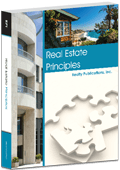Wildfires are increasing in severity and frequency in California, putting more financial strain on state and local governments. Five of the six largest wildfires in California’s recorded history happened in 2020, according to the National Centers for Environmental Information (NCEI).
California’s chronically low inventory of homes for sale and urban land use regulations incentivize builders to develop new housing in wildfire zones, according to a recent study from the University of California, Berkeley and Next 10, a California nonprofit organization.
Wildfire zones are defined as those areas located near wildland areas with buildings and structures highly susceptible to damage by wildfires. Increased development in these wildfire zones exacerbates the risk of wildfire.
The study suggests that continuing to build in wildfire zones will:
- make California’s already constrained inventory of homes increasingly vulnerable;
- hinder state efforts to control carbon emissions; and
- undermine the state’s wildland habitats.
Common approaches to combating wildfires in the state include retrofitting existing homes, imposing stricter building codes for new homes and establishing evacuation routes and shelter-in-place plans.
Redirecting development away from wildfire zones is not a common approach. In fact, builders find it easier to build in areas most at risk for wildfires since those areas are often less developed. The study argues there are more impactful ways to mitigate wildfire risk while also meeting the state’s housing and climate goals.
The study observes three rebuilding scenarios California can explore in high-risk areas that have recently been disrupted by wildfires:
- rebuilding as usual, which uses existing recovery plans and historical growth trends to anticipate building patterns;
- managed retreat and urban density, which incentivizes disaster victims to move to lower risk areas, while also promoting infill development in existing urban locations; and
- resilience nodes, which involves communities rebuilding a limited number of houses in high-risk areas while also building wildfire buffer zones to serve as natural barriers to wildfires.
The study applied these approaches to three California neighborhoods recently impacted by wildfires:
- Santa Rosa, impacted by the 2017 Tubbs Fire;
- Ventura, impacted by the 2017 Thomas Fire; and
- Paradise, impacted by the 2018 Camp Fire.
The study found that managed retreat works best in suburban and urban communities where building elsewhere is possible.
For rural communities within wildland areas (such as Paradise), managed retreat is not as feasible. Instead, the resilience nodes strategy mitigates fire risk over the long term since they add density and thus defensible space.
In addition to the benefits for fire risk, the managed retreat and resilience nodes strategies also support:
- housing goals, since they both support adding infill housing such as accessory dwelling units (ADUs);
- climate goals, since they both decrease greenhouse gas emissions; and
- neighborhood property values, as seen after the Great Recession when infill development retained higher home values than development in outlying areas, according to the Environmental Protection Agency (EPA).
Communities generally see maximum benefit for housing and environment from managed retreat, but stronger economic and equity gains from resilience nodes. Some communities are wrestling with the trade-offs from each strategy and may consider multiple approaches when rebuilding.
Related article:
Disclosures mandated
Despite 2021’s white-hot market — and buyers overlooking safety disclosures — it’s important for agents to inform their clients of the potential dangers associated with a property. When a property is located in a very high fire hazard severity zone or a state fire responsibility area, the seller’s agent needs to disclose this fact in a Natural Hazard Disclosure (NHD) Statement. [See RPI Form 314]
Disclosure of a natural hazard is mandated on all types of property. [Calif. Civil Code §1103.1(b); See RPI e-book Real Estate Principles Chapter 17]
In addition, seller’s agents need to inform buyers when a property is located in:
- an area of potential flooding;
- a very high fire hazard severity zone;
- a state fire responsibility area;
- an earthquake fault zone; and
- a seismic hazard zone. [CC §1103.2]
A buyer’s agent, on receiving the NHD Statement from the seller’s agent, owes the buyer a special agency duty to care for and protect the buyer’s best interest. The buyer’s agent reviews the NHD Statement and makes recommendations and explanations regarding the adverse consequences of its content to the buyer.
Related Video: The NHD Form for Uniformity
Click here for more information on this topic.
Although California is experiencing an inventory shortage and needs new housing units, the state needs to be strategic about where it builds.
Human presence in wildland areas is a major cause of fires, accounting for approximately 85% of all wildfires, according to the U.S. Department of the Interior.
California is faced with tackling its dual housing and climate crises while also managing wildfire risk. As wildfires continue to impact the state’s environment and economy, the state needs to contend with not only rebuilding areas already impacted, but also mitigating future disasters.
Rather than continuing to build in hazardous wildfire zones, the state may incentivize building more infill development and missing middle housing such as small multi-unit buildings. Loosening zoning restrictions in California will permit more infill development in the form of ADUs and missing middle housing.
Real estate professionals need to be prepared for inquiries and concerns over wildfire safety from buyers and sellers. Though buyers might not be proactive about reviewing disclosures about natural hazards, especially in 2021’s competitive market with bidding wars in high gear, assessing wildfire risk has quickly become a life-or-death decision not to be taken lightly.
Related article:
Amid climate change, agents find safety in complete disclosures
Want to learn more about this topic? Click the image below to download the RPI book cited in this article.















